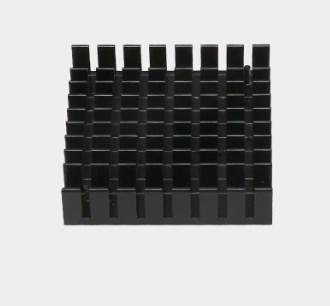The durability and corrosion resistance of the Aluminum Profile Heatsink is a pivotal attribute that defines its suitability for various industrial applications. These heatsinks, crafted from aluminum, are designed to withstand the rigors of fluctuating environmental conditions while maintaining their structural integrity and performance. The inherent properties of aluminum, such as its lightweight nature and high thermal conductivity, make it an ideal material for heat dissipation. However, the question of how these Aluminum Profile Heatsinks fare in terms of durability and resistance to corrosion is of paramount importance.
Aluminum, as a material, is known for its resistance to corrosion due to the formation of a protective oxide layer on its surface when exposed to air. This oxide layer acts as a barrier, preventing further oxidation and thus protecting the Aluminum Profile Heatsink from the corrosive effects of the environment. However, the effectiveness of this protective layer can be influenced by various factors, including the presence of certain chemicals, humidity levels, and temperature fluctuations.
To enhance the durability and corrosion resistance of Aluminum Profile Heatsinks, manufacturers often employ a range of surface treatments. Anodizing is a common process that involves electrolytically converting the surface of the aluminum into a durable, corrosion-resistant oxide layer. This not only strengthens the protective barrier but also allows for the application of a wide range of colors, which can be beneficial for aesthetic and identification purposes.
Another treatment used to improve the corrosion resistance of Aluminum Profile Heatsinks is the application of a conversion coating, such as chromate conversion coating or phosphate conversion coating. These coatings provide an additional layer of protection, further enhancing the corrosion resistance. In some cases, more robust protection is achieved through the application of a physical vapor deposition (PVD) or chemical vapor deposition (CVD) coating, which can include materials like titanium nitride or zinc.
The durability of Aluminum Profile Heatsinks is also influenced by their design and construction. Heatsinks that are designed with proper consideration for mechanical stress points and fatigue are more likely to maintain their structural integrity over time. Additionally, the use of high-quality aluminum alloys can contribute to the overall durability of the heatsink, as these alloys often have improved strength and resistance to deformation.
In terms of practical applications, the durability and corrosion resistance of Aluminum Profile Heatsinks are particularly important in environments where the electronic devices they cool are exposed to harsh conditions. For instance, in marine or industrial settings where salt spray and chemical fumes are prevalent, the ability of the heatsink to resist corrosion is crucial to ensure the continued operation of the equipment.
Furthermore, the long-term performance of Aluminum Profile Heatsinks is also a testament to their durability. Over time, the efficiency of a heatsink can degrade due to the accumulation of dust and debris, which can insulate the heatsink and reduce its ability to dissipate heat. However, with proper maintenance, including regular cleaning, Aluminum Profile Heatsinks can maintain their performance for extended periods.
In conclusion, the durability and corrosion resistance of Aluminum Profile Heatsinks are essential characteristics that contribute to their widespread use in thermal management solutions. Through the use of protective surface treatments and high-quality aluminum alloys, these heatsinks are designed to withstand the test of time and the challenges posed by various environmental conditions. By understanding and addressing the factors that influence their durability and resistance to corrosion, manufacturers can continue to produce Aluminum Profile Heatsinks that meet the demanding requirements of modern electronics.

